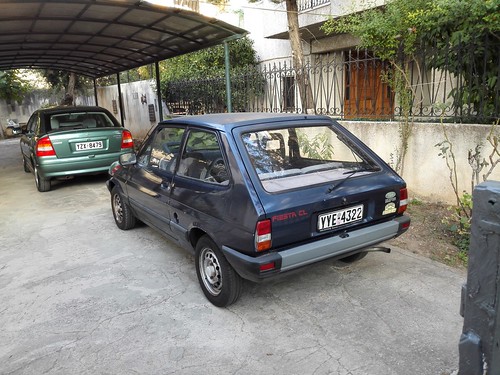For the duration of 285983-48-4 histological analyses of a set of TB-connected genes recognized from this first microarray set, we found that particular transcripts ended up particularly enriched in cells found at the base of the flavor bud, suggesting divergent gene expression between the top and bottom parts of flavor buds. This observation prompted us to accumulate a second set of LCM samples isolated from both the prime (n = 4) or base (n = 4) fractions of CV TB (Determine 1G). These samples (n = eight) had been received from distinct macaques than individuals from the very first experiment and processed separately for microarray analyses (Table S1). Gene expression information ended up combined with the first set of twenty samples to produce a 28 sample information established. We re-normalized all 28 samples using the GC-RMA algorithm. All 28 samples passed info high quality manage parameters with a indicate +/2 SD % current  get in touch with of 4169%. Principal ingredient evaluation confirmed 3 clusters: LE samples, FG TB and CV TB samples from the first microarray established, and top and bottom CV TB samples from the 2nd microarray set (clustered adjacent to the complete TB samples) (Figure S1). These observations are constant with distinctive designs of gene expression among TB and LE samples. TB-related genes ended up determined in a multi-step method. First, we removed improperly performing probe sets (these with a suggest intensity #twenty five in TB samples). Then using a sequence of pairwise comparisons in between diverse sample sets we calculated fold adjust and p values (Student’s t-examination). The pairwise comparisons were: CV TB versus LE, FG TB compared to LE, CV TB top as opposed to LE, and CV TB base vs . LE. Last but not least we picked probe sets representing genes considerably expressed at certain sites utilizing the subsequent inclusion values: expression ratio $five-fold, p benefit #.05 to make a TB-connected probe set listing. The checklist of TB-associated probe sets was then thoroughly annotated by reference to the human genome and RefSeq databases. Database annotation incorporated: probe established ID, gene title, gene symbol, pairwise comparisons with corresponding p-values, acknowledged or predicted area of gene merchandise, and practical classification of gene item. Last but not least, redundant probe sets were eliminated ensuing in a database that contained two,382 TBassociated genes.
get in touch with of 4169%. Principal ingredient evaluation confirmed 3 clusters: LE samples, FG TB and CV TB samples from the first microarray established, and top and bottom CV TB samples from the 2nd microarray set (clustered adjacent to the complete TB samples) (Figure S1). These observations are constant with distinctive designs of gene expression among TB and LE samples. TB-related genes ended up determined in a multi-step method. First, we removed improperly performing probe sets (these with a suggest intensity #twenty five in TB samples). Then using a sequence of pairwise comparisons in between diverse sample sets we calculated fold adjust and p values (Student’s t-examination). The pairwise comparisons were: CV TB versus LE, FG TB compared to LE, CV TB top as opposed to LE, and CV TB base vs . LE. Last but not least we picked probe sets representing genes considerably expressed at certain sites utilizing the subsequent inclusion values: expression ratio $five-fold, p benefit #.05 to make a TB-connected probe set listing. The checklist of TB-associated probe sets was then thoroughly annotated by reference to the human genome and RefSeq databases. Database annotation incorporated: probe established ID, gene title, gene symbol, pairwise comparisons with corresponding p-values, acknowledged or predicted area of gene merchandise, and practical classification of gene item. Last but not least, redundant probe sets were eliminated ensuing in a database that contained two,382 TBassociated genes.
LCM of macaque taste tissue. Intact FG papilla area (A), residual1732528 tissue after LCM (B), and isolated FG style bud spot (C). Intact LE part (adjacent to FG papilla) (D), residual tissue after LCM (E), and isolated LE regions (F). (G) Collection of prime and bottom TB fractions by LCM. Intact CV papilla section (G), section with bottom portion taken off (H), isolated bottom fraction (I), segment with prime portion eliminated (J), and isolated leading portion (K). Scale bar is 20 mm in A and represents panels A, forty mm in D and represents panels D, and forty mm in G and signifies panels G.
We sought to discover genes expressed completely or predominantly in the base or best parts of CV TB. A overall of 159 TBassociated genes exhibited intra-TB expression variations ($5fold CV TB base vs . CV TB top ratio or $five-fold CV TB prime vs . CV TB bottom ratio, p benefit #.05): 79 genes in the CV TB bottom fraction (Desk S3) and 80 genes in CV TB top portion (Table S4). The most plentiful purposeful course of genes in the CV TB base portion encoded extracellular matrix (ECM) proteins (n = 18), indicating that basal style bud cells could actively secrete matrix components and take part in basement membrane formation. The up coming most ample functional course was mobile cycle genes (n = twelve), indicating active cell division at the base of the taste bud.
